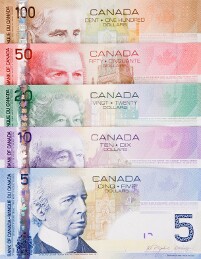The Canadian dollar is trading flat against its G10 currency rivals at the end of the holiday-shortened trading week. The loonie has been gaining against several of its counterparts over the last week, despite an influx of disappointing economic data. With energy prices firmly rebounding and the investors selling the US dollar, could the Canadian dollar have a strong second half?
On Friday, the IHS Markit manufacturing purchasing managersâ index climbed to 47.8 in June, from 40.6 in May â anything below 50 indicates a contraction. Experts had penciled in a slight boost to 41.
Although this represented the fourth consecutive month of declines, the reading pointed to weaker contraction in factory activity as the economy rebounds. Output, new orders, and employment slipped at the softest rate since March. Overall, business sentiment surged to a five-month high over higher demand and production forecasts.
Statistics Canada reported that the trade deficit narrowed to $680 million in May, up from $4.27 billion in April. Economists had expected a $3 billion trade gap. Exports climbed 6.7% to $34.6 billion, driven by an increase in motor vehicle sales. Imports tumbled 3.9% to a nine-year low of $35.29 billion.
Earlier this week, the April gross domestic product (GDP) cratered 11.6%, which was better than the median estimate of -13%. Every industry, from finance to utilities, experienced a contraction. Despite beating market forecasts, the GDP suffered the sharpest decline on record.
One of the main factors for the loonieâs stabilization has been the rebound in crude oil prices, which skyrocketed 40% in the second quarter. Since energy remains Canadaâs top exports, any significant change in prices â high or low â can affect both the currency and economy.
August West Texas Intermediate (WTI) crude oil futures fell $0.44, or 1.08%, to $40.21 per barrel. September Brent crude futures dropped $0.38, or 0.88%, to $42.76 a barrel. August natural gas futures picked up $0.014, or 0.81%, to $1.748 per million British thermal units.
The benchmark 10-year government bond dipped 12 basis points to 0.549%, while the 30-year note shed 13 basis points to 0.998%.
The USD/CAD currency pair dipped 0.01% to 1.3564, from an opening of 1.3565, at 16:35 GMT on Friday. The EUR/CAD jumped 0.03% to 1.5251, from an opening of 1.5244.
If you have any questions, comments, or opinions regarding the Canadian Dollar, feel free to post them using the commentary form below.
Canadian Dollar Flat As Oil Slumps, Manufacturing Rebounds
